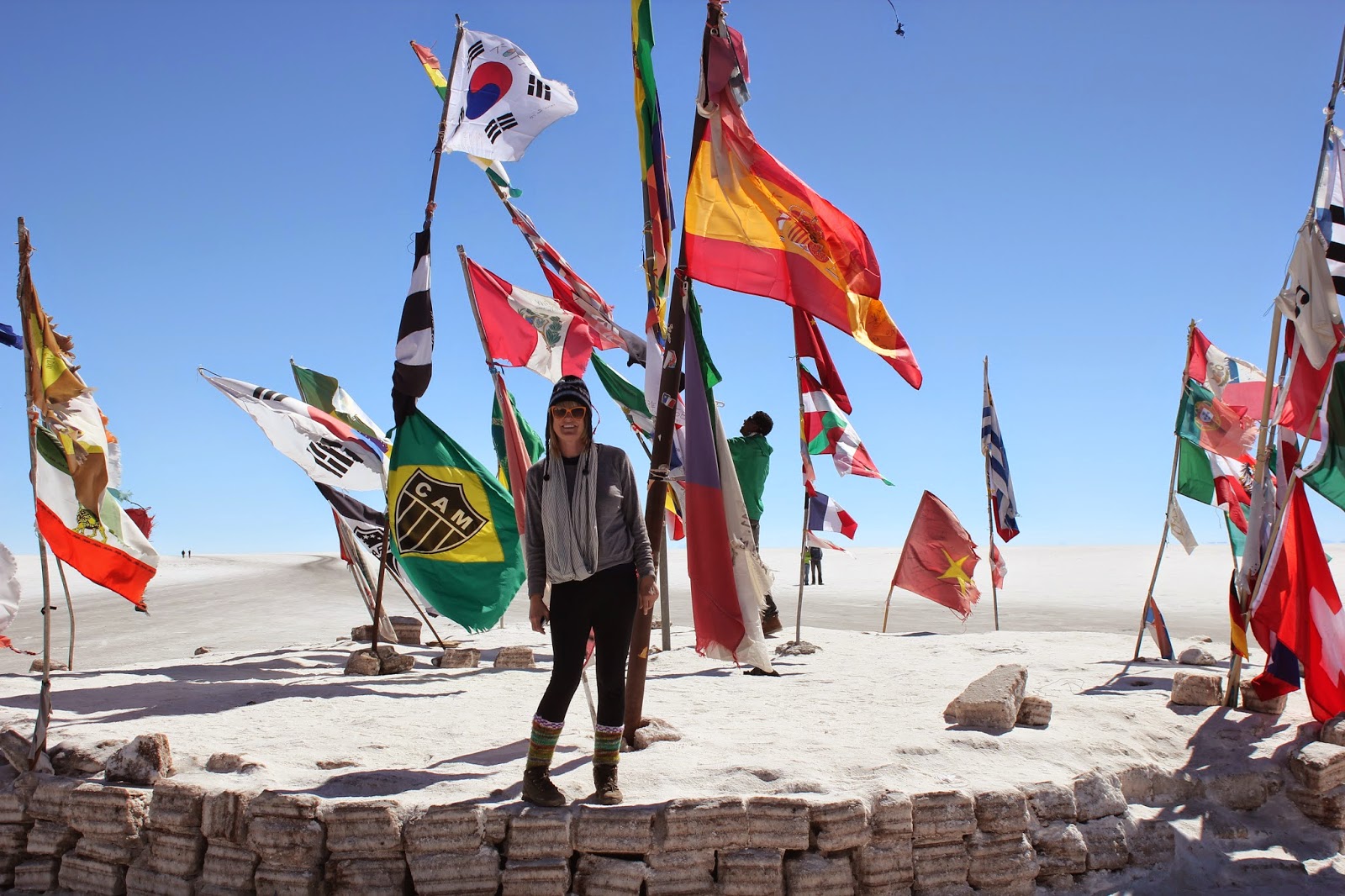 |
| Persective shots fun! |
 |
| The amazing Salar De Uyuni |
 |
| People going about their business on the Plaza Murrillo |
 |
| Cacti on the Salar De Uyuni |
 |
| The train cemetery provided a stunning photo opportunity |
After Cuzco I changed my original plan and decided to go to Bolivia. I'd met a girl who had been living in La Paz and I had long since wanted to visit Uyuni to see the salt flats. An overnight bus journey from Cuzco got me into La Paz for mid morning. I had booked a hostel which was within walking distance of the bus station and after checking in and freshening up I set off to explore the city.
LA Paz is a vibrant, colourful, frenetic South American city but one pretty easy to navigate. I explored on foot the first day then met my friend, Sarah, for dinner. On the second day I did a free walking tour once again which started outside the infamous San Pedro prison.This is the largest prison in La Paz and renowned for being a society within itself. The book Marching Powder, written by Rusty Young and published in 2003, describes the experiences of the British inmate Thomas McFadden who became known for offering prison tours to tourists. Significantly different from most correctional facilities, inmates at San Pedro have jobs inside the community, buy or rent their accommodation, and often live with their families.
We went through markets and a couple of the squares learning about the history and culture of the city. I was fascinated by the stalls selling dead baby llamas and foetuses. They are buried by Bolivians under their houses as a form of blessing. I loved seeing ordianary Bolivians going about their daily tasks and shopping at the market stalls. Women in traditional dress were commonplace, more so than in Peru. Once again, the tour did not disappoint. These type of tours of fantastic and take you to parts of cities you might not necessarily go and offer a wealth of local knowledge. Here is a link to the 'Red Cap' tour. http://www.redcapwalkingtours.com/
From La Paz, I booked an overnight bus to Uyuni. Time was really an issue now so I had to make the best use of it and the next few days were going to be full ones.
The journey to Uyuni proved to be one of the most uncomfortable I have ever endured. This was down to the extreme cold and the fact that the bus appeared to have no heating. The early morning arrival saw fellow travellers arriving frozen to the bone and the temperature displaying -12 degrees. It was between 4 and 5 am and with a few fellow passengers we wandered the streets looking for any sign of life. There was literally one cafe open and a local woman, who obviously was used to the buses arriving early full of cold and tired passengers, was happy to show us to it. I've never been so happy to stand around a patio heater trying to thaw out.
I had booked a trip to La Salar De Uyuni (Salt Flats) from a travel agents in La Paz. With hindsight, I think it would be better to wait until arrival in Uyuni. There were travel agents a plenty, there was little else to this nearby town that acts as a gateway to the salt flats. It had the feel of a frontier town in the Wild West, partly due to the fact that mining is the principal source of income. Although tourists have long been visiting the area, it wasn't until around five years ago that interest grew in extracting the 5.4m tons of lithium which is found just below the surface of the salt.
The flats, located in Southern Bolivia near the country's Tunupa volcano make up the world's largest salt desert, around 11,000 km sq.
Once I had waited, and waited and waited some more ( promptness and organisation don't seem particular priorities in Bolivia) my trip was underway.
It was a surreal experience as the four wheel drive cruised through the Salt Flats to our first stop, the train cemetery where old rusting trains are a great photostop against the all white salt flat and blue sky backdrop. From here we made our way to the Ojos de Sal where water bubbles up from beneath the salt plains and piles of salt stand ready to be transported. We had lunch at the Salt Hotel before ending the day close to the Volcan Tunupa. Close by was a lake full of flamingoes and this again afforded a stunning g photo opportunity.
Accommodation on this trip was basic and the extreme cold meant it was an early night after a communal dinner. I had a sleeping bag and slept in every item of clothing I had, including a hat and gloves, just to keep warm.
Hiking the next day was stunning but hard work. The altitude really slowed me up once again. The afternoon gave me a chance to visit the giant cacti and have fun getting some great perspective shots. I've included some here.
The trip was a whistle stop one but so worth it. I headed back to Uyunj sharing a ride with another group as the sun started to set over the salt plains. I was booked on an overnight bus back
 |
| A butcher's shop in Laz Paz |
 |
| Flamingoes |
















